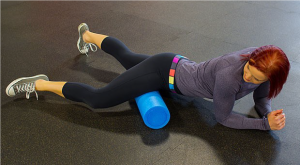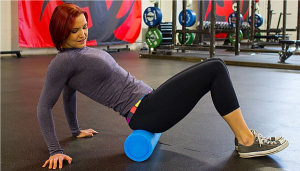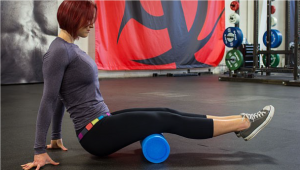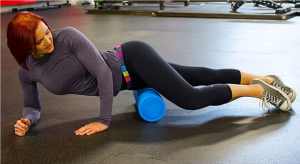 It’s fairly well accepted that muscles need to not only be strong, but pliable as well.
It’s fairly well accepted that muscles need to not only be strong, but pliable as well.
Regardless of whether you’re a body builder, strength athlete, ordinary weekend warrior or just someone who exercises regularly to get in better shape, it’s important to have strength and optimal function through a full range of motion.
Traditional Stretching Vs Foam Rolling
Traditional stretching techniques simply cause very temporary increases in muscle length (and may even cause injury if performed before exercise). On the other hand, Self-Myofacial-Release (SMR) on the foam roller offers improved muscle length and function as well as the break-down of soft tissue adhesions and scar tissue.
Foam Roll Regularly
Foam rolling is effective, inexpensive and convenient but it’s important to note that it doesn’t yield marked improvements overnight. You’ll need to be diligent and stick with it (although you’ll definitely notice acute benefits). Foam rollers can also play a valuable role in correcting postural afflictions.
How to Foam Roll
Foam rolling techniques are very simple to learn. Basically, you just use your body weight to sandwich the roller between the soft muscle tissue to be released and the floor. Roll at a slow pace and actually stop and bear down on the most tender spots (“hot spots”). Once the pain in these spots diminishes, roll the other areas.
In order to increase the pressure on the soft tissue, simply apply more of your body weight to the roller. The simplest way to do this is by either moving from working both legs at once to one leg, or by “stacking” one of your legs on top of the other to increase the tension.
As you get more comfortable with SMR, you’ll really want to be bearing down on the roller with most (if not all) of your body weight. As with almost anything in the training world, there’s considerable room for experimentation, so you’ll definitely want to play around with the roller to see what works best for you.
Be careful to avoid bony points and joints, though. One other technique we’ve found to be beneficial is to work from the proximal (nearest the center of the body) to the distal (away from the center of the body) attachment of the muscle.
For instance, instead of working your quadriceps from top to bottom all in one shot, shorten your stroke a little bit. Work the top half first, and after it has loosened up, move on to the bottom half.
Get to work on those tight muscles and you’ll definitely see appreciable returns on your efforts!
Cautionary Note: Those with circulatory problems and chronic pain diseases (e.g. fibromyalgia) should not use foam rollers.
The following images are some of the most common and effective ways to use your foam roller.

Above: Foam Rolling the Upper Back

Above: Foam Rolling Adductors

Above: Foam Rolling the Glute

Above: Foam Rollings the Latissimus Dorsi

Above: Foam Rolling the Calf

Above: Foam Rolling the Hamstrings

Above: Foam Rolling the I.T.B/Quad
